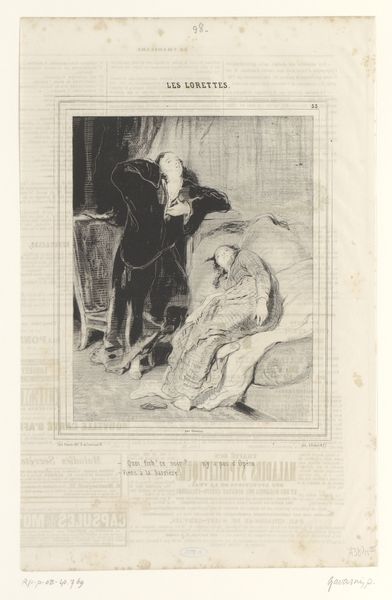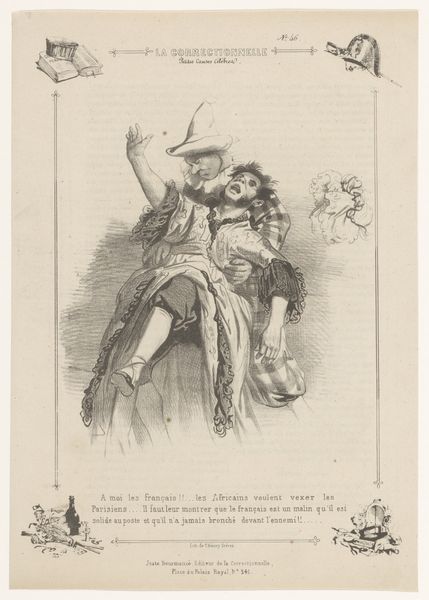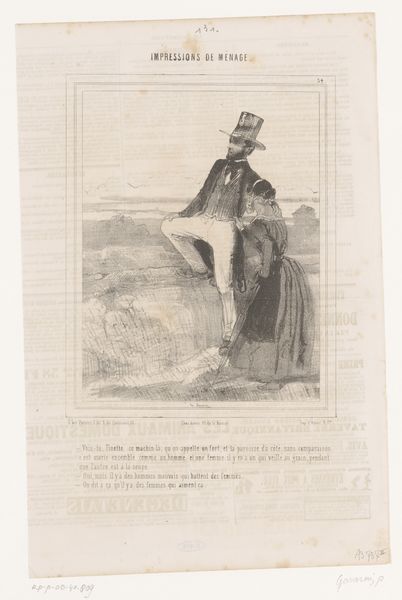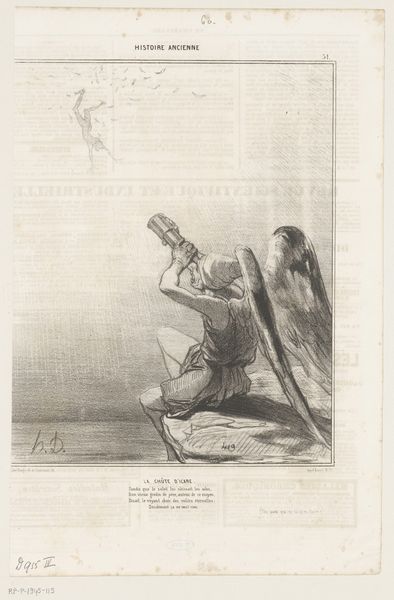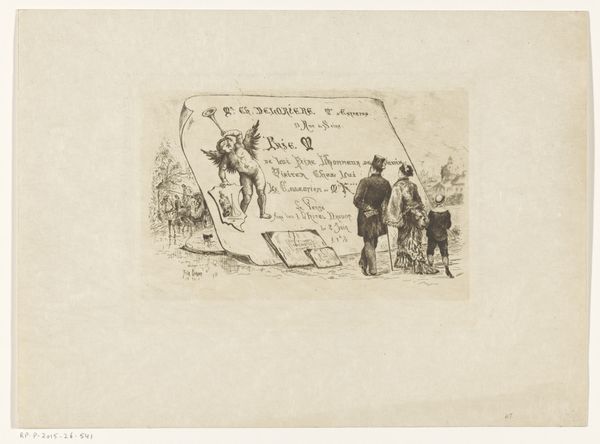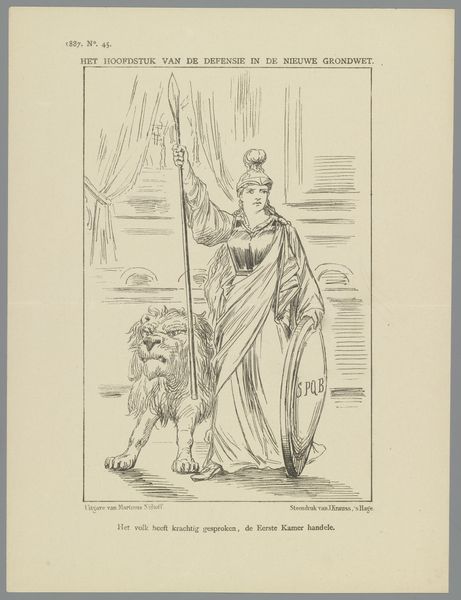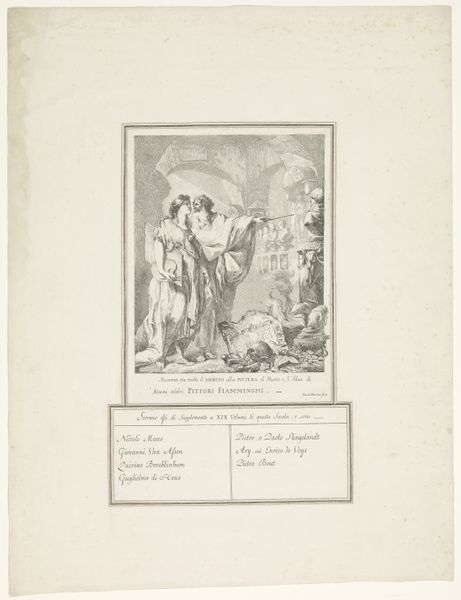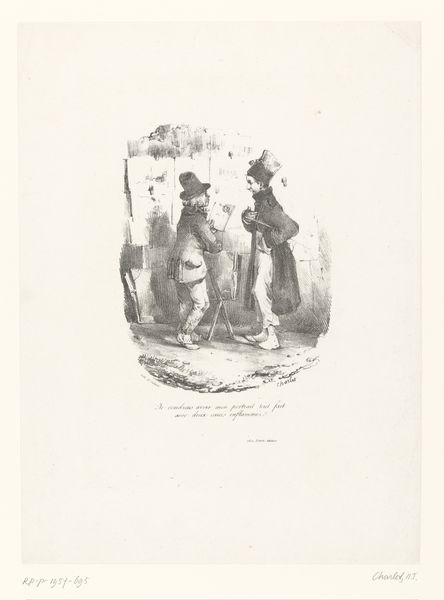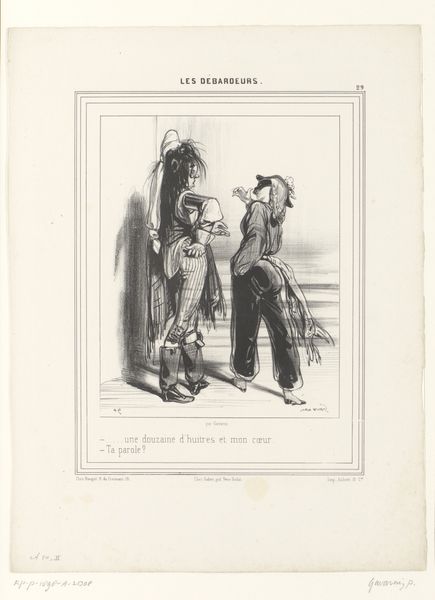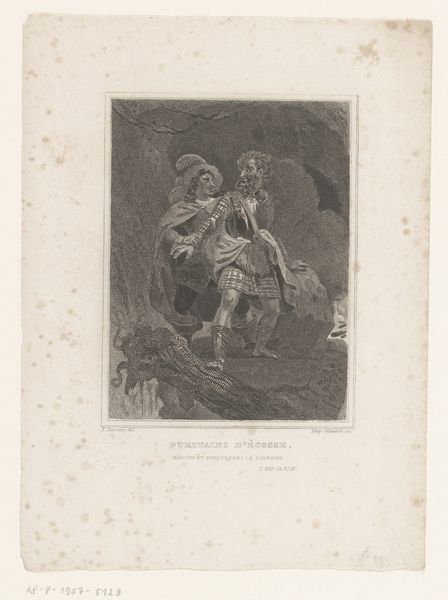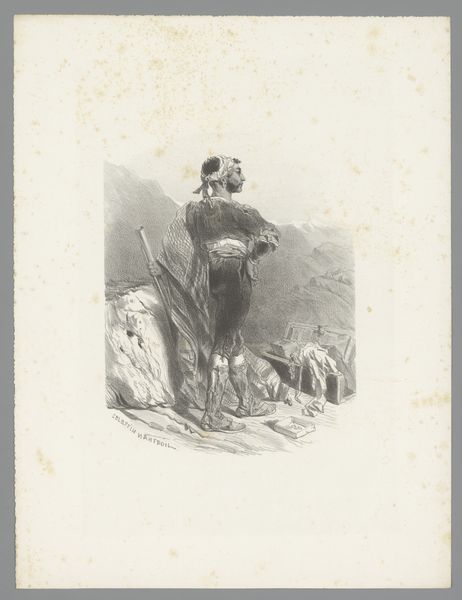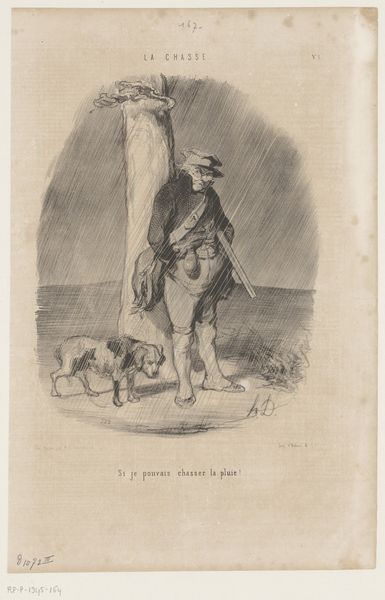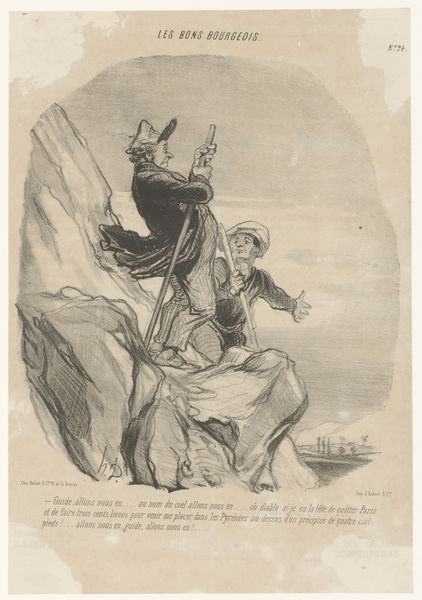
lithograph, print
#
snow
#
aged paper
#
toned paper
#
16_19th-century
#
lithograph
# print
#
old engraving style
#
landscape
#
personal sketchbook
#
romanticism
#
genre-painting
#
realism
Dimensions: height 363 mm, width 237 mm
Copyright: Rijks Museum: Open Domain
Curator: There’s an almost tangible feeling of isolation emanating from this lithograph. Editor: Indeed. We’re looking at "Hunter with Hound in the Snow," created in 1843 by Honoré Daumier, now held at the Rijksmuseum. This print gives us a glimpse into the life and times of 19th-century France. Curator: And Daumier truly captures the grim determination of this figure against the backdrop of swirling snow. The contrast of dark tones against the aged paper is striking, don’t you think? Editor: Absolutely, but there's also an inherent social commentary. The hunter, likely representing the rural working class, braves the elements for sustenance, while societal structures—the aristocracy—enjoy the fruits of his labor from afar. Curator: That’s a strong point. The use of lithography as a medium is interesting here too, it's such an effective medium for distribution and communicating with a broad audience at the time. Do you think the sketchy style lends itself to an implied narrative here? Editor: Definitely. The hurried lines create a sense of immediacy, like a snapshot of a fleeting moment in this hunter's arduous day. It enhances the feeling of hardship and perhaps the constant hustle for survival, a silent struggle often overlooked. Curator: It’s intriguing how Daumier positions the viewer. We're not merely observers; we’re almost participants in the scene, trudging alongside the hunter and his dog through this unforgiving landscape. There’s an interesting sense of scale despite the relatively small nature of the print itself. Editor: Right, but I keep getting drawn back to the composition itself – the nearly monochromatic palette highlights the bare, elemental nature of the scene. And look how Daumier employs short strokes to evoke movement, especially with the falling snow. Curator: So much of Daumier’s work focused on the struggles of everyday people. Considering that, I feel we can look at this piece as a mirror to the social and economic inequalities of the time. Editor: An eloquent view, it leaves me thinking about art's capacity to evoke quiet, yet profound understanding. Curator: Precisely. It’s through such careful visual considerations combined with cultural knowledge that we see art, not as static objects, but reflections of shared human experience.
Comments
No comments
Be the first to comment and join the conversation on the ultimate creative platform.
